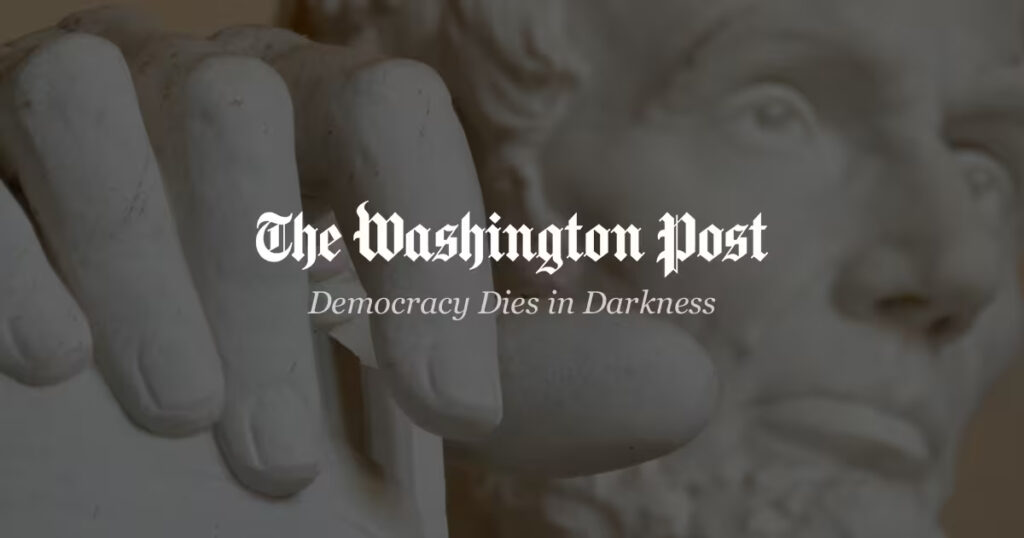College football fans know the commercials: sweeping aerial shots of bustling campuses, face-painted undergrads roaring in the bleachers and researchers peering into microscopes, all under soaring soundtracks. American universities are always selling, and there’s no better time and place than between plays of a big college football game.
But this fall, with the Trump administration attacking schools and public confidence in higher education still near historic lows, schools are shifting their strategies from rah-rah recruitment ads to distinct, detailed stories about how their research improves life in their communities.
Rutgers treats asthma. Colorado expands access to clean water. Minnesota’s agriculture boosts the global food supply. Illinois trains teachers and first responders. LSU develops advanced storm detection tools “to protect you, your loved ones and your way of life.” And the Big Ten Conference at times sidelined its iconic cartoon map ad in favor of a campaign called “We Are Here,” a clinical accounting of how its members are tackling the big problems facing all Americans.
Academic research has always figured into schools’ campaigns, perhaps as a nod to parents who write tuition checks. But this season’s ads focus on schools’ broader impact — and target a broader audience.
“The gap between the general population and the elite scientist is wider than it’s ever been,” Arizona State President Michael Crow said in an interview. “That’s our fault. That’s not the general population’s fault. We need to find better ways to translate, better ways to communicate, better ways to get people to understand [how our work helps them].”
Karen Weaver, a University of Pennsylvania professor who studies the business of college sports, said it’s a smart and timely strategy. College football unifies, she said, and the commercials are reaching people when they’re in a good, happy headspace, watching sports with friends.
“Beats yet another gambling commercial, right?” she said.
Notre Dame, which competes as an independent in football, has a unique TV deal with NBC in which it receives not only a standard, 30-second institutional ad but a two-minute block just after halftime to promote its brand. The school became a pioneer of research storytelling in 2007, when it launched the “What Would You Fight For?” campaign to help good news about research “escape the lab,” assistant vice president of creative and brand management Beth Grisoli said.
And despite all the changes in technology and media, football remains the best way to tell a story to a large, general audience, Grisoli said. In one case, a Notre Dame engineer’s allergy research caught the eye of a pharmaceutical executive watching with his 12-year-old daughter, who had a severe peanut allergy. The executive eventually invested in the technology — and his daughter went to Notre Dame.
“We have calls and emails from people after — I’m not kidding — every single game,” Grisoli said. She adopted the voice of the callers: “‘I had no idea you were doing this. I know so-and-so suffers from such and such; how can I help? You’ve given me so much hope.’”
Universities have long competed fiercely for applicants, professors and grants. But since returning to office, Trump has waged a broad campaign against higher education, slashing federal funding (especially for research), freezing grants to big-name schools and community colleges and threatening to revoke their tax-exempt status. He also has targeted diversity, equity and inclusion programs, launched investigations of race-based scholarships, pressured accreditors and punished international students with visa revocations.
The White House’s unprecedented attacks led to increased cooperation. Earlier this year, more than 60 public and private universities banded together to form Research for a Stronger America, the organization helping coordinate the new in-game ad strategy. In the process, they have chosen new rivals.
“Universities are all in on having groundbreaking research,” Colorado Chancellor Justin Schwartz said in an interview. “Because as a nation, we need to win the competition against other nations.”
Most university leaders interviewed for this story hesitated to discuss Trump or characterize their new ads as political. One school official, who spoke on the condition of anonymity because he was not authorized to speak publicly, compared them to the actors in “Jurassic Park” who had to “keep absolutely still” to avoid being seen and attacked by a T. rex.
But Crow, the Arizona State president, said he has discussed with Trump’s aides the offer of preferential treatment for funding in exchange for compliance with their ideological priorities. Like other university leaders, Crow ultimately said he couldn’t support the since-stalled deal, but he conceded the president has a point about the flaws of higher ed.
“What I’ve been saying to the administration is: Yes, we need some improvement in how the universities are working to better serve the country,” he said. “… Yes, we cost too much. Yes, we have all of these other kinds of issues.”
But academic research is the “invisible hand” behind countless innovations, he argued, including President Dwight D. Eisenhower’s buildup of national defense in the 1950s. And Crow recently went viral for saying the iPhone was not just invented by Steve Jobs but by the roughly 5,000 research groups whose advancements made it possible.
It’s difficult to know what research will unlock the next major scientific breakthrough, so it’s important for the National Science Foundation to fund even obscure things, Crow said, such as fusion energy.
“It’s damn hard to understand,” Crow acknowledged, which is where the in-game advertisements come in.
Yet many schools struggle to tell their stories to general audiences. Some faculty members bristle at framing the merits of higher learning in cold, calculating terms, and others have a hard time explaining their work concisely.
“Higher ed is later to the game in appreciating the value of marketing,” Utah chief university relations officer Chris Nelson said.
A few years ago, Utah created a new role for Andrea Thomas, a veteran of corporate America who had been a marketer for Walmart, Hershey and Frito-Lay. Thomas knew one of her biggest challenges was the cost of college, a much bigger investment than potato chips or chocolate bars. She refined the marketing strategy, and when Utah moved from the California-centric Pac-12 Conference to the Texas-dominated Big 12 in 2024, she consulted her new colleagues on how to localize some of their tactics to argue why Utah was worth the cost.
Earlier this year, when Utah joined the RSA, Thomas consulted with her network on how to tell these new stories during football games.
“We’ve always talked about research,” she said. “But talking about research in 30 seconds in front of a broad audience is not something that we did very well or at all.”
She knew the stakes were high. As it does for many schools, Utah’s media reach balloons during big football games and successful football seasons. Last month, Utah debuted its new ad during its big rivalry game with BYU, highlighting Utah’s work in metallurgy and high-tech prostheses.
Utah lost the game but won the ad buy: More than 2 million people watched the game.
Laura Meckler and Susan Svrluga contributed to this report.
The post College ads, a staple of sports TV, shift tone in response to Trump
appeared first on Washington Post.




